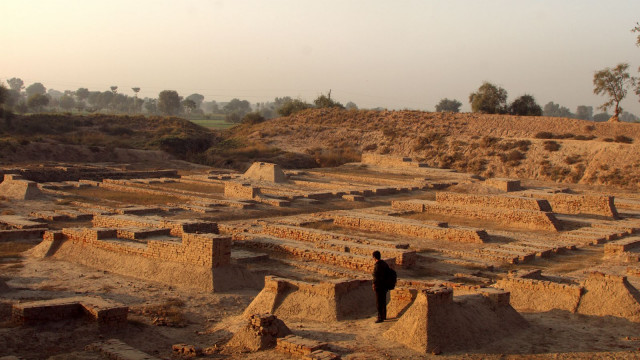Indus Valley civilisation 2,500 years older than previously believed
Researchers have also proposed a new theory for the decline of the civilisation

The Indus Valley civilisation may be even older than initially thought. PHOTO: QUARTZ
Indian researchers have used carbon dating techniques on animal remains and pottery fragments to conclude that the Indus Valley settlements could be 8,000 years old, which would make the Indus Valley settlements even older than the Mesopotamian and Egyptian civilisations.
Neglected heritage: Unless inspected, Sanghar’s Inspection Bungalow will crumble to dust
“Our study pushes back the antiquity to as old as 8th millennium before present and will have major implications to the evolution of human settlements in Indian sub-continent,” Anindya Sarkar, a professor at the department of geology and geophysics at IIT-Kharagpur, said in a statement.
Sarkar, along with his team of researchers from the Archaeological Survey of India, the Physical Research Laboratory in Ahmedabad and Pune’s Deccan College, used a technique known as the Optically Stimulated Luminescence, which measures the amount of light emitted from mineral grains to date past events.
The study, published in Nature on May 25, focused on the ancient settlements in Bhirrana in northern Indian state of Haryana, of which an extract reads: “Based on radiocarbon ages from different trenches and levels, the settlement at Bhirrana has been inferred to be the oldest (>9 ka BP) in the Indian subcontinent. To check its validity we dated archaeological pottery from two cultural levels using optically stimulated luminescence (OSL) method and thus investigated the interrelationship between the cultural levels and climate change that occurred right at the settlement, a critical gap in information that exists in our present understanding of the Harappan civilisation.”
US to return smuggled Buddha sculpture to Pakistan
Archaeological studies had earlier suggested that the civilisation was centred around Harappa and Mohenjo-Daro in Pakistan, and Lothal, Dholavira, and Kalibangan in India, Sarkar explained. But the new findings suggest that it was actually spread over a much larger part of India, alongside River Saraswati, which is believed to have disappeared some 4,000 years ago.
A new theory for the decline of civilisation has also been proposed by researchers, which was earlier believed to have been caused by climate change.
Rocky future for Somalia's ancient cave art
According to the study, instead of shifting monsoon patterns, the decline of the civilisation could be attributed to a change in cropping patterns and storage of grains.
“Our study suggests that the climate was probably not the cause of Harappan decline,” the researchers said in a statement.
“Increasing evidences suggest that these people shifted their crop patterns from the large-grained cereals like wheat and barley during the early part of intensified monsoon to drought-resistant species of small millets and rice in the later part of declining monsoon and thereby changed their subsistence strategy,” they added.
But that shift in agriculture turned out to have devastating consequences, the researchers explained. Reason being that these later crops generally have much lower yield, and so, the organised large storage system of mature Harappan period was abandoned giving rise to smaller more individual household based crop processing and storage system. This could have acted as catalyst for the de-urbanisation of the Harappan civilisation rather than an abrupt collapse.
This article originally appeared on Quartz.












1726134115-0/BeFunk_-(41)1726134115-0-208x130.webp)






COMMENTS
Comments are moderated and generally will be posted if they are on-topic and not abusive.
For more information, please see our Comments FAQ